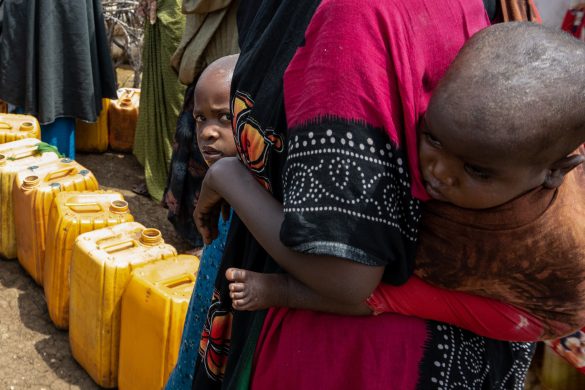Ny rapport viser, at der er sket et fald på 17 procent i antallet af nye hiv-smittede i løbet af de sidste 8 år.
Verdenssundhedsorganisationen WHO og FNs program mod hiv/aids, UNAIDS, konkluderer i deres statusrapport “AIDS Epidemic Update”, at forebyggende programmer har effekt. Bedre adgang til behandling øger de smittedes levetid, så antallet af mennesker, der lever med aids, er steget.
“The good news is that we have evidence that the declines we are seeing are due, at least in part, to HIV prevention,” said Michel Sidibé, Executive Director of UNAIDS. “However, the findings also show that prevention programming is often off the mark and that if we do a better job of getting resources and programmes to where they will make most impact, quicker progress can be made and more lives saved.”
More people are living with HIV than ever before
Data from the AIDS Epidemic Update also show that at 33.4 million, [31.1 million–35.8 million] there are more people living with HIV than ever before as people are living longer due to the beneficial effects of antiretroviral therapy and population growth. However the number of AIDS-related deaths has declined by over 10% over the past five years as more people gained to access to the life saving treatment. UNAIDS and WHO estimate that since the availability of effective treatment in 1996, some 2.9 million lives have been saved.
Dr Margaret Chan, Director-General of WHO said: “International and national investment in HIV treatment scale-up has yielded concrete and measurable results. We cannot let this momentum wane. Now is the time to redouble our efforts, and save many more lives.”
Antiretroviral therapy has also made a significant impact in preventing new infections in children as more HIV-positive mothers gain access to treatment preventing them from transmitting the virus to their children. Around 200 000 new infections among children have been prevented since 2001.
In Botswana, where treatment coverage is 80%, AIDS-related deaths have fallen by over 50% over the past five years and the number of children newly orphaned is also coming down as parents are living longer.
AIDS out of isolation and integrated with other health and social welfare services
One of the significant findings of the report is that the impact of the AIDS response is high where HIV prevention and treatment programmes have been integrated with other health and social welfare services. Early evidence shows that HIV may have a significant impact on maternal mortality. Research models using South African data estimate that about 50 000 maternal deaths were associated with HIV in 2008.
“AIDS isolation must end,” said Mr Sidibé. “Already research models are showing that HIV may have a significant impact on maternal mortality. Half of all maternal deaths in Botswana and South Africa are due to HIV. This tells us that we must work for a unified health approach bringing maternal and child health and HIV programmes as well as tuberculosis programmes together to work to achieve their common goal.”
The AIDS epidemic is evolving; HIV prevention programmes are not rapidly adjusting
The double report also shows that the face of the epidemic is changing and that prevention efforts are not keeping pace with this shift. For example the epidemic in Eastern Europe and Central Asia once characterized by injecting drug use is now spreading to the sexual partners of people who inject drugs. Similarly in parts of Asia an epidemic once characterized by transmission through sex work and injecting drug use is now increasingly affecting heterosexual couples.
Data show that few HIV prevention programmes exist for people over 25, married couples or people in stable relationships, widowers and divorcees. These are the same groups in which HIV prevalence has been found to be high in many sub-Saharan countries. For example in Swaziland people over the age of 25 accounted for more than two thirds of adult infections yet very few HIV prevention programmes are designed for older people.
Funding for HIV prevention has become the smallest percentage of the HIV budgets of many countries. For example in Swaziland, just 17% of the country’s total budget for AIDS was spent on prevention despite a national HIV prevalence rate of 26%. In Ghana, the prevention budget was cut in 2007 by 43% from 2005 levels.
Se “AIDS Epidemic Update” på følgende link: http://data.unaids.org/pub/Report/2009/2009_epidemic_update_en.pdf














